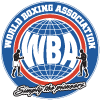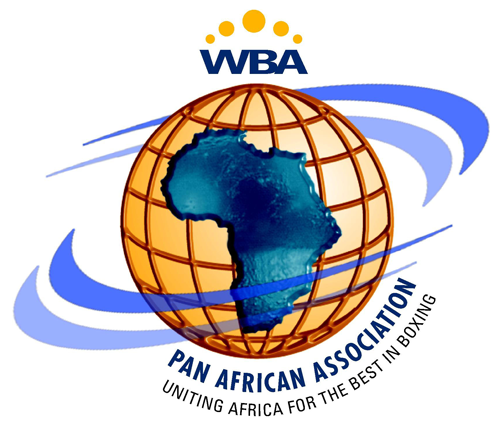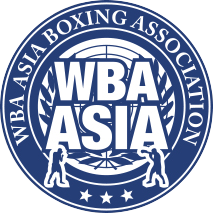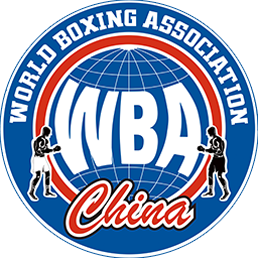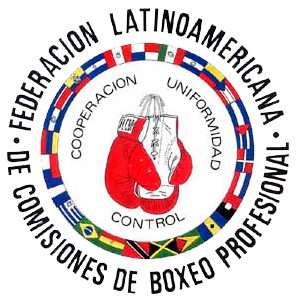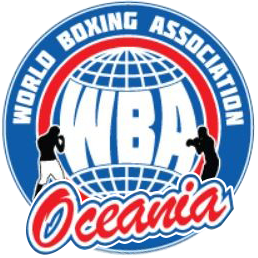The Knockout in Boxing
WBA Convention –
Tokyo September 2006.
Dr J H Fleming MRCP (UK) Neurologist
Milpark
Hospital,
Johannesburg
WBA Medical Advisory Panel
The knockout remains the most spectacular manifestation in the sport of boxing, thrilling the public and seemingly satisfying some deep primeval urge, but this has always been a worrying element to ringside physicians.
I hope to explain some of the neurological knowledge on the subject of concussion and unconsciousness, and relate this to what one actually sees at the ringside when a boxer is stopped.
To the lay person a blow on the head is followed by loss of consciousness and collapse will full recovery in a short period of time. I would like to point out that the whole process is complex and probably not completely understood to this day.
The first modern studies of head injury were by an English physicist Holbourne in 1943. He looked at the anatomical nature of the skull and the physical characteristics of the brain and derived certain experimental models and formulae. He recognized the importance of shearing forces developing in the deep brain substance in response to violent rotational movements. He was of course dealing mainly with very severe brain injuries of the type associated with falls from heights or traffic accidents.
Animal studies using various mechanisms for inducing head injury in a variety of species have been done in various research centers.
There appears to be agreement that there are 4 main mechanisms involved in brain injury:
1. Translation or linear movement;
2. Rotational or tortional movements;
3. Bending and stretching of the upper spine and brain stem at the neck level;
4. Local impact to the skull often with brain injury to the opposite side or contra coup injury.
To deal with these:
1. Translation or linear forces:
It seems that the brain can absorb forces in a straight line, particularly in a front/back direction fairly well. This was illustrated perhaps amusingly in studies of woodpecker drilling behaviour.
How these birds managed to spend their entire lives bashing their heads against trees without damaging the brain was a valid question, and this study seemed to answer the question, showing how the bird keeps his beak parallel and avoids any rotatory component.
2. Rotational:
From Holbourne’s work in 1943 it was very apparent that rotational forces to the head were the major component in concussional brain damage. In a typical experiment:
A silicone gel in a skull model with a grid inserted was subjected to rotatory force. The gross displacement can be seen in this diagram. This gel simulates the consistency of brain tissue fairly well. Obviously the larger the force the more displacement and it is not difficult to see how this will eventually to stretching and tearing of nerve axons and even blood vessels in the live brain. But these extreme forces would not usually be seen in the boxing context.
Another aspect of rotation is the shearing force applied to bridging veins which can be torn or rupture leading to subdural haematomas.
3. Bending at the neck with traction on brain stem.
This mechanism is not much known about but certainly seems plausible theoretically.
4. Direct Injury
Depending on the force applied there may be deformation or denting of the skull or merely increased pressure under the area struck. Another very important phenomenon is due to changes at the opposite pole of the skull, and this is known as contra coup injury. Research has shown that a high pressure develops under the impact area with a low pressure or even vacuum occurring at the opposite side with a violent blow..
On the other hand it may merely be a rebound phenomenon due to the slight elastic consistency of brain tissue.
This may be relevant in cases where a boxer, falling hard strikes his head on the canvas. These type of injuries tend to be focal or localized to an area and there may be very little diffuse injury and therefore no loss of consciousness.
These are the 4 mechanisms causing damage, and I would now like to look at what actually happens to brain tissue.
The general modern consensus seems to be that the mildest change on trauma is stretching and physical deformation of nerve tissue. This is now accepted as an explanation for the experience everyone in this room has had when one leans on an arm or falls asleep on an arm in a certain position. An area corresponding to a nerve goes numb or experiences pin-and-needles. When the pressure is released this sensation recovers within a minute or so. If the force is mild therefore, the brain tissue is temporarily deformed and does not function normally, but regains its shape and function after a few minutes.
If the force is larger damage is shown to occur at a microscopic level. Histological studies from persons who have had mild head injury but died from other causes has confirmed degenerative changes occurring in the nerve processes or axons, but preservation of the myelin supporting structures. This enables the axons to regenerate and resume normal function after a period of weeks or months. This explains the slow recovery from serious head injury where the person may have been unconscious for a few days.
| Deformation of neural tissue with rapid restoration and recovery;
Damage to axons with preservation of myelin sheaths and slow recovery; Rupture of entire neural process with no prospect of recovery. |
Finally with severe force axons and their supporting myelin sheaths can actually rupture or snap. This is permanent and there is no chance of the 2 ends ever finding one another and a characteristic retraction bulb is seen after a few days if the brain is examined microscopically.
In boxing obviously the change is almost limited to deformation with the rapid recovery within minutes. However I would be a little cautious as there is evidence that in certain patients a few axons may suffer Type II, particularly after a severe knockout. Some may suffer actual rupture. This would explain that after a severe knockout the person may take a week or so to recover and experience post-concussional symptoms – headache, dizziness, poor concentration, irritability etc during this time.
Also as Type III damage is permanent repeated knockouts could eventually produce a cumulative load of dysfunction and lead to the ‘punch-drunk’ syndrome.
I would again like to emphasise here the very important consideration of age. There is no doubt that increasing age from the age of 28 to 30 causes progressive loss of elasticity in nervous tissue and can change the category of histology damage for a given force, for example a given blow in a 35 year old would have a far greater affect than the same blow in a 20 year old. Evidence for this abounds in the head injury and boxing literature.
The next point is what part of the brain is involved with loss of consciousness.
The centre of the brain for consciousness and alertness lies deep near the base of the brain in what is known as the mesencephalic-diancephalic core of the brain. The integrity of this system is necessary for consciousness and alertness and damage or dysfunction will result in loss of consciousness or coma. There is no obvious visible structure but a diffuse network of brain cells and grey matter in this area, usually referred to as the Reticular Activating Substance.
The most apt definition of concussion is by Ommaya and Gennarelli and reads as follows:
“A graded set of clinical syndromes following head injury, wherein increasing severity of disturbance in level and content of consciousness is caused by mechanically induced strains affecting the brain in as centripedal sequence of disruptive affect on function and structure. The effects of this sequence always begin at the surface of the brain in the mild cases and extend inwards to affect the diencephalic-mesencepahic core at the most severe levels of trauma”.
I believe this is relevant to the boxing knockout. Note that increasing force alters both the type of damage caused, and the anatomical extent of the damage.
Most important here is to appreciate is that the only protection the brain has from this type of injury is the contra-force or shock absorbing affect of the neck muscles. Animal experiments show emphatically that there is a massive difference between the amount of brain damage produced from a given force where the animals head was held fast as compared to when it was allowed to move loosely.
To digress for a moment, I have for years been intrigued by the differences between head injury in rugby football and boxing. In particular what is surprised me is the absence in the vast majority of cases in boxing of amnesia in relation to knockout. Most KO subjects can describe in fairly full detail when happened to them whereas rugby players knocked out in play can usually not recall much, sometimes for prolonged periods of 20 minutes or half an hour. Some even continue to play in this state and there are legends of players performing heroic deeds and never recalling anything of them afterwards.
Probably the most famous description of being knocked out was by the great American writer, Paul Gallico. He started his career as a sportswriter and persuaded Jack Dempsey in about 1923 to spar with him at a training camp. His description is as follows:
| All I knew about boxing was to keep my left arm out. I knew the position. Dempsey came in, bobbing and weaving… There is one photograph in the News… I am bent over and Dempsey’s left hook is whistling over my head. I have no recollection of ducking that one. But I didn’t duck the next one. I found myself on the floor. Everything went sort of black. The ring made one complete revolution clockwise and then went back, counterclockwise (Gallico, “Paul Gallico” 64). |
Here we have a complete novice against one of the greatest heavyweight knockout specialists of all time and still he can recall in fair detail most of what happened.
I have seen hundreds of knockouts and true concussion with full loss of concussion is fairly rare although does undoubtedly occur on occasion. What we are seeing in the vast majority of cases is I believe the early stage impairment of the long tracts to the legs and preservation of function in the deep structures of the brain.
A few words about what I regard as “myths” of head injury.
1) The idea that the point of the jaw has any particular significance. I believe that any blow can cause dysfunction by rotating the head, usually and in a particularly in a lateral direction. I have never been convinced that mouth guards do much.
2) What as been referred to as the “Hollywood Myth” of head injuries. This takes 2 forms:
a) That someone, usually the hero, with a single blow can consistently and predictably render someone unconscious or disabled. I believe if one were able to do this, at least 25% of these blows would probably prove to be lethal.
b) A person, again usually the hero, can be hit on the head and instantly become unconscious and can recover fully 10 minutes later and get his revenge. Any such blow is likely to cause impaired conscious for hours and victim would probably not be compos mentis for a few days.
Hollywood has indeed trivialised brain injury in the general public’s eyes.
3) The use of Head guards, which has often been advocated. They are unlikely to reduce the rotatory forces much, and would seem to be most use in preventing cuts. Also the headguard will present a potentially larger target, and perhaps hinder evasive action in defence.
Finally what lessons from this theory to contribute to boxing safety?
1) Referees should be watching the boxer’s muscle tone, particularly the neck, very carefully at all times, particularly obviously if the boxer is on the receiving end. Neck muscles are vital to protect the brain from excessive movement in response to a blow.
2) I emphasise the importance of age and importance of preventing, particularly unsuccessful boxers continuing to box after the age of about 30 years.
3) The evidence of histological changes which can recover or regenerate add scientific backing to the need for a boxer who is knocked out or suffered a severe punishment to rest for a period of 6 weeks at least.









